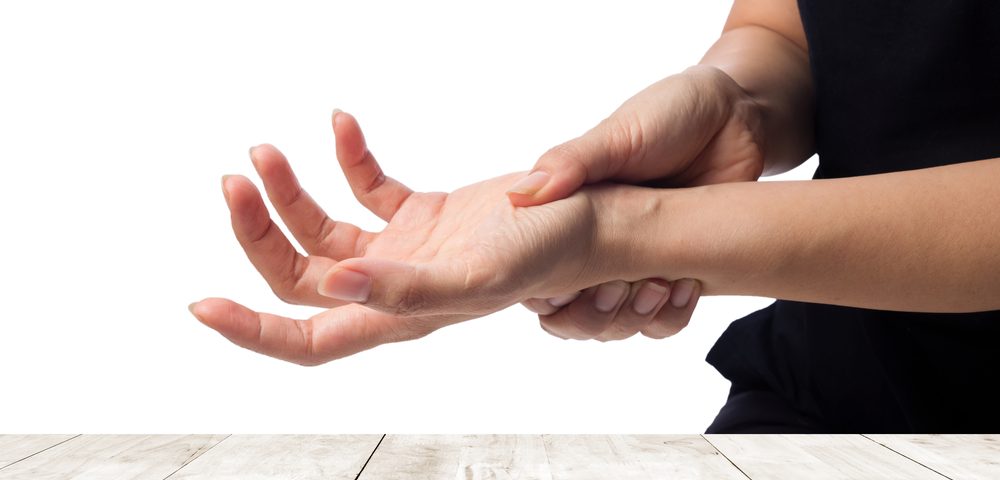Women with fibromyalgia have impaired hand function and strength, which is associated with increased pain and greater disease severity, according to a new study.
The study, “Assessment of hand function and disability in fibromyalgia,” appeared in the journal Zeitschrift für Rheumatologie.
Reduced muscle strength is common in fibromyalgia patients, limiting their ability to do daily activities and increasing the risk for disability. However, according to the authors, little attention has been focused on the impact of fibromyalgia on hand function and how it subsequently affects quality of life in patients.
To address this, a research team from Turkey compared pain threshold, handgrip strength, and pinch strength in 40 women with fibromyalgia and 30 individuals used as controls. In both groups, the mean age was 40 years old.
Pain level was assessed with a Visual Analogue Scale, from zero to 10, at rest. Handgrip strength of the dominant hand was measured three times at one-minute intervals in each patient, using a hand-held device called a dynamometer. A similar protocol was followed to determine pinch strength through a manual pinch meter.
Functional status was assessed with the Fibromyalgia Impact Questionnaire (FIQ). This test specifically measures 10 different properties — physical disability, feeling good, feeling fresh, fatigue, pain, stiffness, loss of working day, difficulty working, anxiety, and depression. In addition, hand disability was measured with the 30-item Disability of Arm–Shoulder–Hand (DASH) questionnaire, and hand skills and coordination with the Purdue Pegboard Test.
The results showed that compared with controls, fibromyalgia patients had lower handgrip and pinch strength, reduced dominant hand skills and coordination, and higher hand disability.
In the 34 women with moderate fibromyalgia, pain levels correlated with handgrip strength, two- and three-point pinch strength, lateral pinch strength, and hand skills and coordination.
Of note, while in assessments of two-point pinch strength, also called tip-to-tip, the device is placed between the tip of the thumb and the tip of the index finger, testing three-point strength, also called three-jaw chuck, requires placement between the pad of the thumb and pad of the index and middle fingers.
Researchers found that, in moderate fibromyalgia patients, the higher the FIQ score, which represents a greater disease impact, the lower the handgrip strength, two- and three-point pinch strength and lateral pinch strength. In turn, hand disability was associated with reduced handgrip strength, lateral pinch strength, and hand skills and coordination.
Data further revealed that, in patients with fibromyalgia, greater hand disability correlated with lower hand skills and coordination.
These findings indicate that “hand function should be taken into consideration in the management of [fibromyalgia],” the investigators wrote.
Study limitations included having only six patients with severe fibromyalgia, the team noted.

